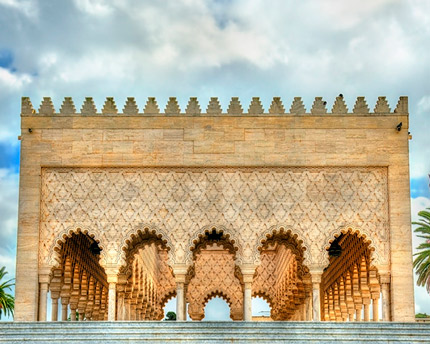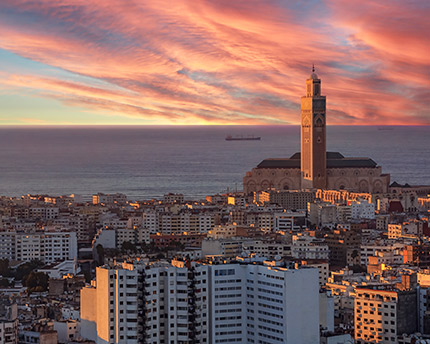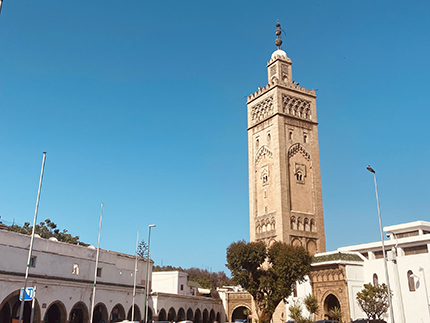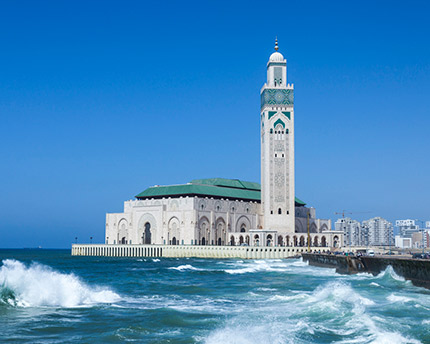Cities are built based on their history, the passing of time and the different historical periods that they have lived. An example of this is the Quartier Habous, or Habous quarter, one of the main areas of Casablanca. Check out its attractions
Morocco is a country with a tremendously rich history and with cities and towns that are treasures of time past. Casablanca is a faithful witness, whose past is more recent than other cities in the country and its growth is linked to the 19th and 20th centuries.
The Quartier Habous is a true reflection of this. Despite its modernity, this new area maintains the essence of the old medinas, with narrow streets, small squares and the atmosphere of a Moroccan souk. Find out more.
History of the Quartier Habous
The period of the French and Spanish protectorates in Morocco brought about a number of changes in the country. More than 40 years of partial sovereignty by the two European countries over the Moroccan territory in the 20th century left their mark on many cities.
The Quartier Habous of Casablanca was developed during the French Protectorate, especially in the 1920s and 1930s. Its purpose was to house many traders and their families from other parts of Morocco. Marshal Lyautey, the first Resident-General in the Protectorate (the highest French authority in the country) fostered a number of urban developments in Moroccan cities, under the direction of the architect Henri Prost.
Prost’s idea was to design the Villes Nouvelles while respecting the old cities, as was the case in Rabat and Casablanca. The plans for Habous were designed by Albert Laprade, Prost’s assistant, Auguste Cadet and Edmond Brion. The idea was to rebuild a medina respecting the traditional style but under the standards of modern urban planning. This is how Casablanca’s Quartier Habous was brought about.
The name Habous refers to the religious assembly that allocated dwellings within a medina.
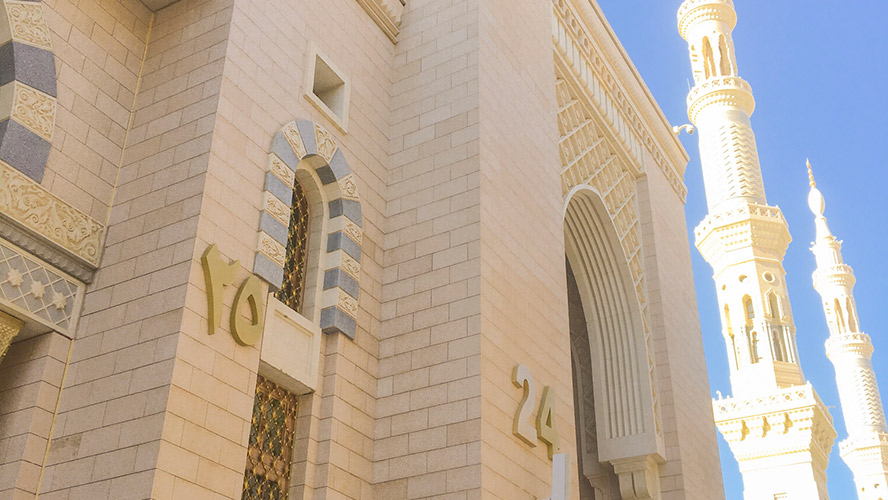
Things to see in the Quartier Habous
Today, Habous is one of Casablanca’s most picturesque quarters. It is a modern, quiet and well-kept neighbourhood that does not forget its origins and maintains the usual aesthetics of Arab cities, with arches, small squares and gardens.
The Quartier Habous is located in the centre-south of Casablanca, near the Royal Palace. That building, the official residence of the King of Morocco on his visits to the city, was built at the same time as the neighbourhood in the 1920s. It is one of Casablanca’s main monuments, although it is not open to the public. It is well worth a visit to see the exterior and admire the portentous main door, a large portico with three horseshoe arches and the characteristic geometric shapes and arabesques.
Next to the Royal Palace is the Mahkama du Pacha, the former residence of the pasha (governor) among other uses, a monumental building built in 1941, now the courthouse. Its interior contains elements that combine Moroccan art with certain Andalusian touches, including courtyards that resemble the famous Court of the Lions at the Alhambra Palace in Granada.
Nevertheless, Habous is a neighbourhood where you can walk and a large open bazaar where you can stroll through its narrow streets. Casablanca’s New Medina is home to numerous traders ranging from artisans to booksellers, as can be seen on Victor Hugo Boulevard. There are also stalls selling clothes, leather, jewellery, ceramics, spices, etc.; it is a genuine souk.
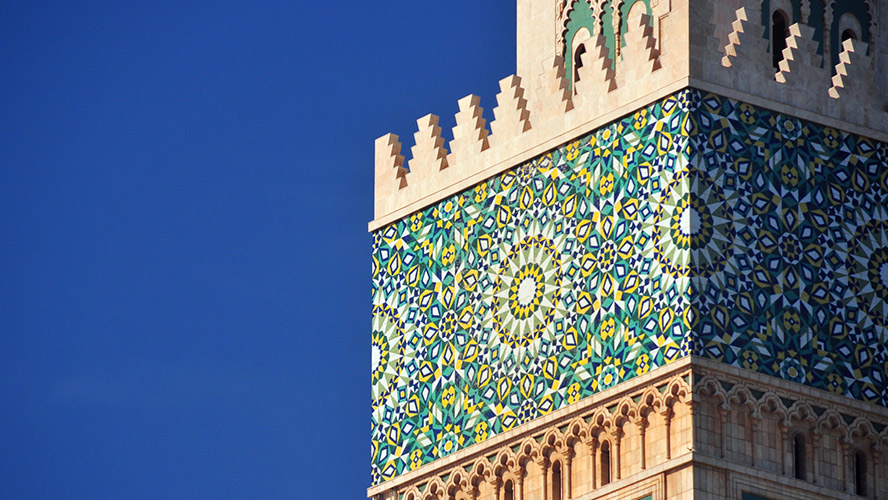
Mohammed VI Mosque and Moulay Youssef Mosque
Two other landmarks in the Quartier Habous are the Mohammed VI and Moulay Youssef mosques, although only Muslims can go in.
The Mohammed VI Mosque is a small mosque that combines Arab and Andalusian styles in its architecture, located in the north of the neighbourhood.
The Moulay Youssef Mosque is next to the Royal Palace and the Mahkama du Pacha. It was built at the same time as the Quartier Habous in 1923 and has a quadrangular minaret.
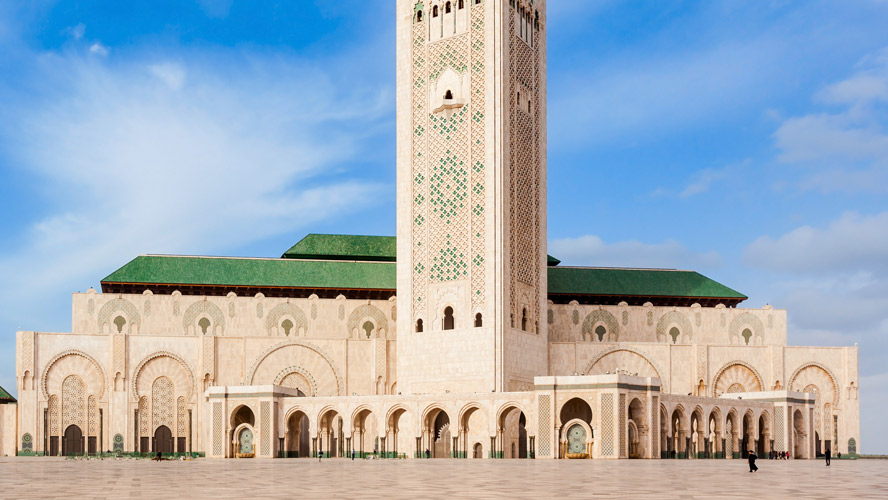
Where to stay in Casablanca
As a large city, Casablanca provides a broad range of accommodation options. Two of them are the Barceló hotels which are located in the heart of the city centre, on Anfa Boulevard, one of Casablanca’s main thoroughfares.
The Barceló Casablanca is a mid-priced four-star hotel, perfect for a multi-day stay in Casablanca. It has modern rooms, some of them with views of the Hassan II Mosque, as well as a restaurant serving Moroccan cuisine.
If you prefer to upgrade your stay to luxury, the Barceló Casablanca Anfa is the hotel for you. This accommodation stands out because of its Art Deco style and the fact that it is fully equipped. In addition to its 206 B-Rooms, there is a gym, spa, outdoor swimming pool, terrace and the Acajou restaurant, which combines Moroccan, French and Mediterranean cuisine on its menu.




































































